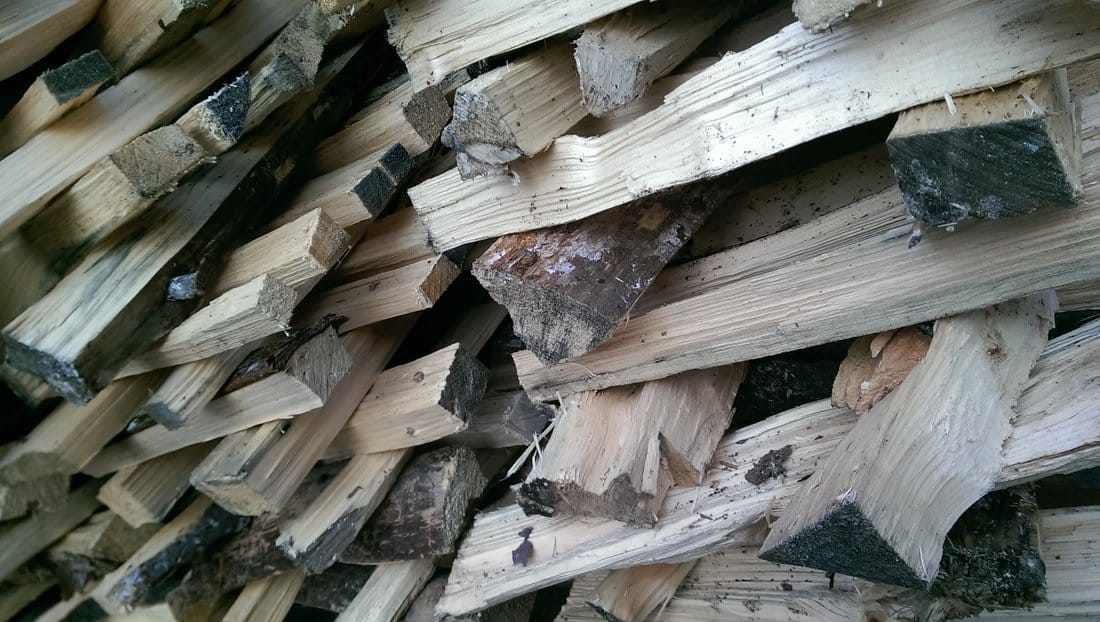Not to be confused with “sugar woods,” a.k.a. the “sugar bush,” or “sugar stand,” “sugar wood” refers to the fuel you need to power your wood-fired evaporator.
It’s 90 degrees in New England, so, naturally, it’s time for us to put in supplies for next Spring’s backyard maple sugar making operation. If we were good little Vermonters, of course, we would have done this task the very minute the snow melted. Clearly, we’re still assimilating.
This is easy enough for us to do, we’ve got chainsaws, a log-splitter, and the bucked-up remnants of 50 or so giant white pine trees we had removed from our property several years ago to make room for the sun (and protect the house). We’ve heard from many customers that their sugar-wood comes from trees that fall on their property naturally. But what if you don’t have all those trees? And what if you’re a first-time sugar maker and don’t know anything? Well, keeping in mind we’re on year four of this journey ourselves, here’s what we know.
First, on quantity and composition. For our annual 25-50 tree operation, we use between one-half and one cord of wood – almost exclusively soft wood. Any wood can be used to sugar, but most sugar makers agree that softwood – which burns fast and hot and then disappears from your wood box – rather than hardwood – which burns cooler, slower and sticks around in the form of coals – should make up the bulk of one’s supply.
What about width and length? You want to split your wood down until it is nice and thin – say, the width of your upper-arm, a two-by-four, or a big baseball bat. And while length depends upon the size of your wood box (for the Sapling Evaporator, we recommend no longer than 24 inches), it is true that longer cuts of wood will help you even out the heat under your pan. Also, less cuts mean less work.
How about timing? Summer really is the time to split, stack, and cover your sugar wood supply, so that, come Spring, it is nice and dry. I wasn’t kidding about using “snow out” as your cue, though. We heard from customers that were putting in their sugar wood as early as April this year! And, not to fear, plenty of us wait until the fall, “better late than never” being an appropriate adage for this circumstance.
But what if you don’t have the wood? Get on the phone and call around to the saw mills in your area. Ask them if they have “slab” wood (slab wood is what’s left over when a round tree is squared off to make boards) or scrap wood for sale, and if they deliver. Within 5 minutes of hopping on the phone, I was able to find two sawmills within 60 miles of my home that would sell me such wood. One for $25 per truckload and one for $10. Both “you pick,” so to speak, but still, not bad!
Failing that, get creative! Local businesses often have stacks of wooden pallets year-round with which they would be happy to part. Pallets are dry, and come split for you. And, although you will need to hack them apart and cut the pieces to length, you can do so with simple tools like a crowbar and handsaw as long as you’ve got enough energy or help. (Just make sure you put those nails in the metal recycling when you’re done!) It’s been done. And by our customers, to boot.
That’s really all there is to it! And with that, it’s back to the wood pile for me!

